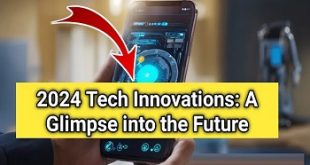Introduction
In the ever-evolving world of automobiles, innovation in no way takes a pit stop. New auto technological know-how continues to structure the panorama of the automobile industry, improving safety, comfort, efficiency, and sustainability. This article delves into the present-day developments in new vehicle technology, highlighting how they are using the future of transportation.
Electric Vehicles (EVs): A Paradigm Shift in Mobility
The shift in the direction of electric-powered motors (EVs) represents a transformative bounce in new auto technology. These automobiles are powered by way of electric powered motors, drawing their electricity from rechargeable batteries.
Not only do they produce zero tailpipe emissions, but they additionally provide decreased working prices in contrast to common gasoline-powered cars.
The EV market has viewed magnificent growth, with a plethora of picks from mounted automakers and startups alike. One of the key drivers in the back of this increase is the speedy improvement of battery technology. These developments have led to accelerated range, shorter charging times, and greater durability.
Furthermore, governments around the world are supplying incentives and infrastructure help to motivate EV adoption, growing a ripple impact that is propelling the automobile enterprise toward a greater sustainable future.
Autonomous Vehicles: The Dawn of Self-Driving Cars
Autonomous vehicles, or self-driving cars, are revolutionizing the way we think about transportation. These motors use an aggregate of sensors, cameras, radar, and synthetic talent (AI) to navigate except human intervention.
Companies like Tesla, Waymo, and General Motors are pioneering self-sustaining automobile technology, and whilst thoroughly self-sufficient automobiles have come to be commonplace, they maintain substantial promise in phrases of safety, efficiency, and accessibility.
The advantages of self-sustaining cars encompass decreased site visitors accidents, accelerated mobility for humans with disabilities, and the doable to tackle visitor congestion. The improvement of rules and public acceptance are the key challenges in dealing with the significant adoption of self-driving cars.
Advanced Driver Assistance Systems (ADAS): Enhancing Safety
Advanced Driver Assistance Systems (ADAS) signify a giant milestone in new vehicle technology. These structures use sensors and cameras to aid drivers with a variety of tasks, making using them safer and greater convenient. Some famous ADAS elements include:
- Adaptive Cruise Control: This device adjusts a vehicle’s velocity to hold a secure following distance from the vehicle ahead.
- Lane-Keeping Assist: It helps drivers remain inside their lane with the aid of offering corrective guidance inputs or warnings.
- Automatic Emergency Braking: If a collision is imminent, the gadget can robotically observe the brakes to stop or mitigate the impact.
- Blind-Spot Monitoring: These technological know-how indicators drive automobiles in their blind spots, lowering the hazard of lane-change collisions.
- Parking Assistance: Many vehicles now have parking help points that can routinely park the vehicle, making parallel parking a breeze.
Connected Cars: Staying in Sync
The generation of related automobiles is here. These automobiles are outfitted with superior telematics structures that furnish real-time records exchange. This connectivity permits various features, including:
- Live Traffic Updates: Vehicles can get entry to real-time site visitors’ data, assisting drivers in keeping away from congestion and picking out the fastest routes.
- Remote Diagnostics: Cars can ship diagnostic facts to producers or provider centers, permitting proactive protection and faster repairs.
- Remote Control: Owners can remotely begin their cars, lock/unlock doors, and even manipulate local weather settings with the usage of smartphone apps.
- In-Car Wi-Fi: Many contemporary automobiles provide in-car Wi-Fi, keeping passengers linked for the duration of the journey.
- Infotainment: Advanced infotainment structures supply get right of entry to to music, navigation, apps, and voice assistants for an extra exciting riding experience.
Sustainable Materials and Manufacturing: A Green Revolution
The push for sustainability has made its way into auto-technological know-how as well. Automakers are exploring choice substances and manufacturing techniques to limit the environmental influence of automobile production. This consists of the usage of lightweight substances like carbon fiber and aluminum to enhance gasoline efficiency.
Moreover, recycling initiatives are being employed to limit waste. Some producers are even exploring bio-based substances and progressive manufacturing strategies to create greater eco-friendly vehicles.
Artificial Intelligence (AI): Smart Driving Assistance
Artificial Intelligence is taking part in a quintessential position in the improvement of new automobile technology. AI-driven structures are being used for a range of applications, including:
- Predictive Maintenance: AI can predict when an automobile can also require maintenance, stopping breakdowns and growing car lifespan.
- Driver Monitoring: AI can display drivers’ conduct for signs and symptoms of fatigue or distraction, growing safety.
- Voice Assistants: AI-powered voice assistants furnish a greater intuitive and hands-free way to engage with the car’s features.
- Traffic Prediction: AI can analyze historic visitors’ facts to predict site visitors’ patterns, supporting drivers to keep away from congestion.
Energy-Efficient Technologies: Improving Fuel Economy
Automakers are consistently working on enhancing the gas financial system of common interior combustion engine (ICE) vehicles. Advanced applied sciences such as turbocharging, direct gas injection, and cylinder deactivation are turning into greater common, resulting in extra environment-friendly and eco-friendly ICE cars.
Cybersecurity: Protecting the Connected Car
As vehicles turn out to be more and more related and reliant on software, cybersecurity has turned out to be a necessary factor in new automobile technology. Protecting cars from cyberattacks and making sure the security of onboard structures has ended up a pinnacle priority. Manufacturers are investing in sturdy cybersecurity measures to shield opposition to doable threats.
The Future of New Car Technology
Further Electrification
The electrification of cars will proceed to be a dominant vogue in the car industry. Battery science will advance, providing increased range, quicker charging, and longer battery life. Moreover, an extra large charging infrastructure will emerge, making EVs even more realistic for consumers.
Autonomous Mobility Services
Fully self-sustaining automobiles will turn out to be a phase of mobility-as-a-service (MaaS) platforms. These offerings will provide shared self-sustaining rides, decreasing the want for personal vehicle possession and improving city mobility.
Sustainability as a Core Principle
Sustainability will stay a key focal point in automobile technology. Manufacturers will try to decrease their carbon footprint using the use of sustainable materials, minimizing waste, and exploring choice power sources.
AI-Enhanced Driving Experience
Artificial Genius will play a more and more sizeable position in personalizing the riding experience. AI will adapt to personal driver preferences, making automobiles smarter and greater intuitive.
Enhanced Connectivity
5G science will allow quicker and greater dependable connectivity in vehicles, facilitating seamless statistics exchange, real-time updates, and more desirable security features.
Energy-Efficiency and Green Innovations
Automakers will proceed to look up and put in force energy-efficient applied sciences to decrease emissions, even in typical ICE vehicles.
Expanded Cybersecurity Measures
As cars grow to be greater connected, the significance of cybersecurity will grow. Car producers will make investments in strong safety structures to guard in opposition to achievable cyber threats.
Conclusion
New automobile science is steering the car enterprise closer to a future of cleaner, safer, and greater related transportation. From the electrification of automobiles to the improvement of independent cars, and the integration of superior driver-help systems, motors are turning smarter, greater efficient, and more environmentally friendly.
The street in advance is stuffed with promise, as modern options proceed to redefine the way we power and ride automobiles. In this ever-changing landscape, one factor stays clear: new auto science is the riding pressure that will form the future of mobility.


